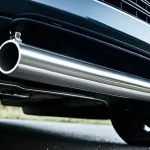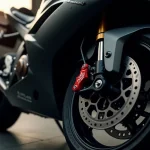Innovative Gear Ratio Techniques for British Racing Cars
Understanding gear ratio optimisation is crucial for enhancing British racing car performance. Recent advancements focus on refining gear ratios to match the unique demands of British racing circuits, where rapid acceleration and precise torque control are essential. Engineers have employed advanced drivetrain methods to recalibrate gear setups, balancing the trade-off between acceleration and top speed.
The mechanical principles behind these innovations lie in selectively adjusting the ratio between engine output and wheel rotation. By optimizing this ratio, cars achieve smoother power delivery, reducing mechanical stress and improving traction on corner exits. This targeted approach enhances acceleration without sacrificing control, vital for the variable conditions typical of British tracks.
Also to discover : Ingenious techniques to keep high-performance british racing car transmissions cool and efficient
Practical strategies for racers include customizing gear sets based on circuit profiles, using data analytics to predict optimal ratios for specific race conditions. Engineers integrate computer modelling and real-time telemetry to fine-tune gear ratios during testing. This method allows for adaptive setups, improving lap times significantly. By adopting these advanced drivetrain methods, British racing teams can extract maximal performance, highlighting the critical role of gear ratio optimisation in contemporary motorsport engineering.
Mechanical Principles Behind Gear Ratio Modification
Understanding gear ratio mechanics is essential for optimizing a vehicle’s performance. At its core, gear ratio affects torque and speed by controlling how engine power translates to wheel movement. A lower gear ratio multiplies torque, enhancing acceleration but limiting top speed, while a higher ratio favors speed over torque. This balance is vital for finding optimal shift points within the engine’s power band, ensuring smooth transitions that maximize efficiency on British racing tracks.
Topic to read : Mastering headlight alignment for classic british cars: a comprehensive guide to uk road compliance
Material and design of gears play a crucial role in maintaining durability and performance under demanding conditions. High-quality alloys reduce wear, while precision-cut teeth improve engagement and reduce power loss. Integrating these gearsets into the drivetrain must consider track-specific demands, such as frequent sharp turns and acceleration zones typical in British circuits.
Weight distribution and drivetrain layout also significantly impact gear ratio selection. Vehicles with rear-wheel drive or different engine placements experience varying load distributions that affect torque delivery. Engineers tailor gear ratios to match these dynamics, optimizing traction and minimizing energy waste. By adjusting gear ratios thoughtfully, racers can achieve superior balance between acceleration, speed, and control.
Comparing Traditional and Modern Gear Ratio Approaches
The debate between classic vs modern gear systems highlights profound shifts in racing technology. Classic gear ratio setups in historic British racing cars prioritized mechanical simplicity and robustness, often featuring fixed ratios tailored to specific tracks. These legacy systems excelled in reliability but lacked adaptability, limiting optimal performance across varying conditions.
With the racing car evolution, electronically adjustable gear systems have emerged, relying on real-time data analysis and computer control to dynamically optimize gear ratios. This technological comparison reveals significant advantages: modern systems deliver enhanced acceleration, fuel efficiency, and driver control, adapting instantly to track demands and driving styles.
Performance gains from adopting contemporary gear ratio methodologies are measurable. Racers benefit from smoother power delivery and refined torque management, directly translating to faster lap times and improved vehicle responsiveness. While classic gearboxes symbolize engineering heritage, modern approaches leverage technology for superior precision and adaptability, marking a clear step forward in competitive motorsport engineering.
Case Studies: Successful British Racing Car Gear Ratio Innovations
British motorsport case studies reveal a strong tradition of refining gear ratio configurations to gain competitive advantages. One notable example is the engineering team behind the McLaren MP4/4 in the late 1980s. By adjusting gear ratios to optimize acceleration out of tight corners, the car achieved remarkable lap time reductions. They fine-tuned the differential and selected gear sets that balanced top speed with track-specific torque demands.
Similarly, Williams F1 implemented innovative gear ratio strategies in the 1990s, focusing on reliability during race distances. Their approach involved testing multiple gear sets under real-world conditions, identifying a configuration that improved both vehicle longevity and performance consistency. The measurable outcome included reduced gear wear and a consistent reduction in lap times, verified through race telemetry and driver feedback.
Experts agree that successful adaptations hinge on not just theoretical calculations but rigorous on-track testing. These British motorsport case studies emphasize tailoring gear ratios to the circuit layout and vehicle dynamics, proving critical to achieving winning configurations. Lessons learned include the importance of adapting gear ratios iteratively and monitoring performance data closely—a strategy that continues to inform modern race car development.
Practical Advice for Racers and Engineers
Essential guidance for optimizing gear ratios in racing
Selecting the optimal gear ratios is crucial for peak performance in British racing scenarios. Start with a clear assessment of your vehicle’s power band and the track’s characteristics. Use gear charts to visualize how different ratios interact with engine RPM and speed. This allows you to pinpoint ratios that maintain the engine within its optimal rpm range during acceleration and cornering.
Simulation software offers a detailed analysis of how gear ratios affect lap times and vehicle response. Tools like virtual dynos help you experiment with various setups without costly trial and error. Pair these tools with expert consultation to confirm findings and adapt to specific vehicle setups or racing classes.
When tuning gear ratios, avoid common mistakes such as:
- Choosing ratios solely based on top speed instead of acceleration balance
- Overlooking the impact of differential settings on gear effectiveness
- Ignoring real-world testing to validate simulation results
Additionally, incorporating DIY performance upgrades—like adjustable sprockets or quick-change gearboxes—can provide greater flexibility in fine-tuning your ratios trackside. Practical, actionable gear tuning not only enhances vehicle responsiveness but can also save time and resources by minimizing guesswork during race preparation.
Visual Guides: Diagrams and Charts for Gear Ratio Selection
Understanding gear ratio charts is essential for optimizing performance on British circuits. These visual aids for racers illustrate how different gear ratios impact acceleration, top speed, and fuel efficiency under track-specific conditions. For example, a sample diagram showing gear ratios tailored to Silverstone highlights how shorter ratios improve corner exit speed on technical sections, while longer ratios benefit straights like Hangar Straight.
Reading these technical diagrams requires focusing on key elements: gear number, ratio value, and the corresponding speed range at specific engine RPMs. By analyzing the overlay of multiple gear ratios on circuit sector maps, racers can identify the best gear combination for each segment, balancing power delivery and acceleration efficiency.
When applying gear ratio charts, it’s recommended to match the chart to track characteristics—tight bends demand higher torque from lower gears, while high-speed straights favor reduced engine revs via taller gears. Visual aids also help simulate lap data to predict how gear shifts influence lap times.
For high-quality visual references within British racing contexts, sources such as official race team technical manuals and specialized motorsport engineering publications offer detailed gear ratio diagrams tailored to various circuits, ensuring racers have dependable guides for precision tuning.



